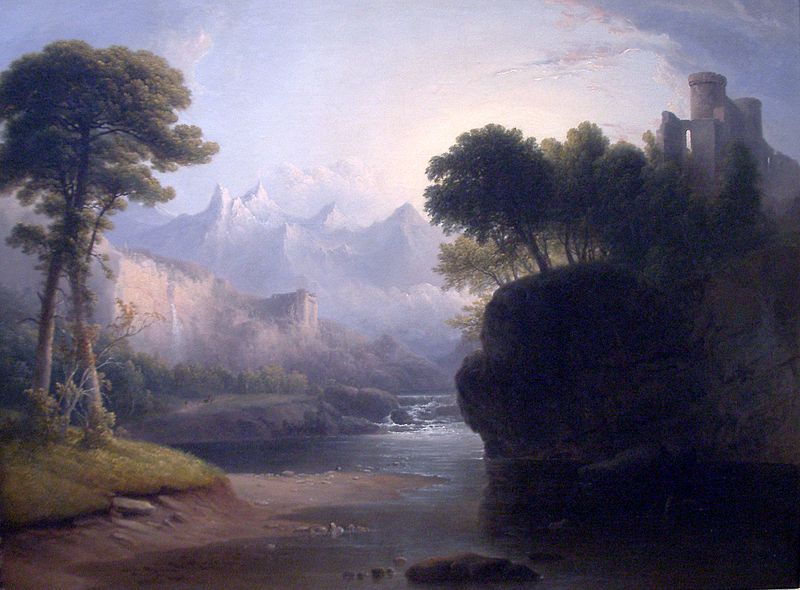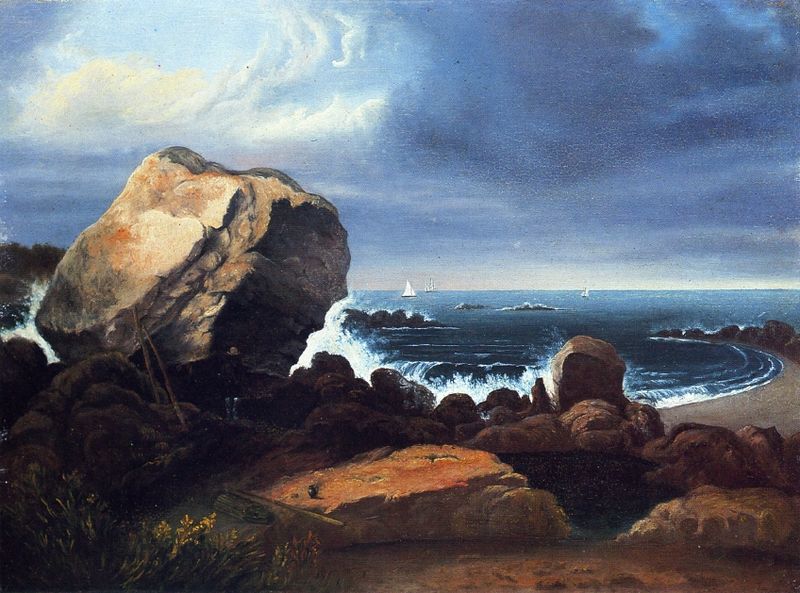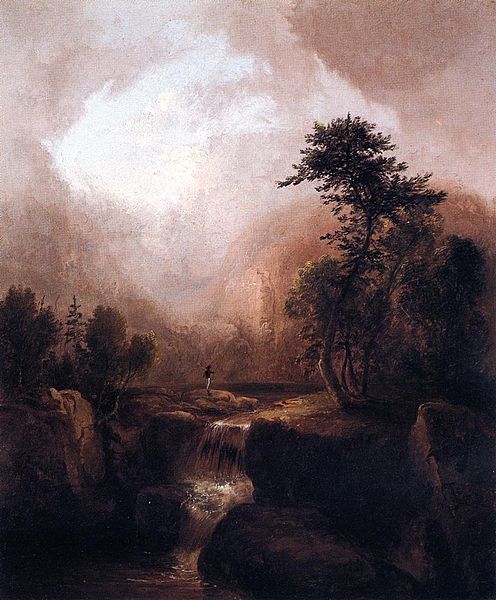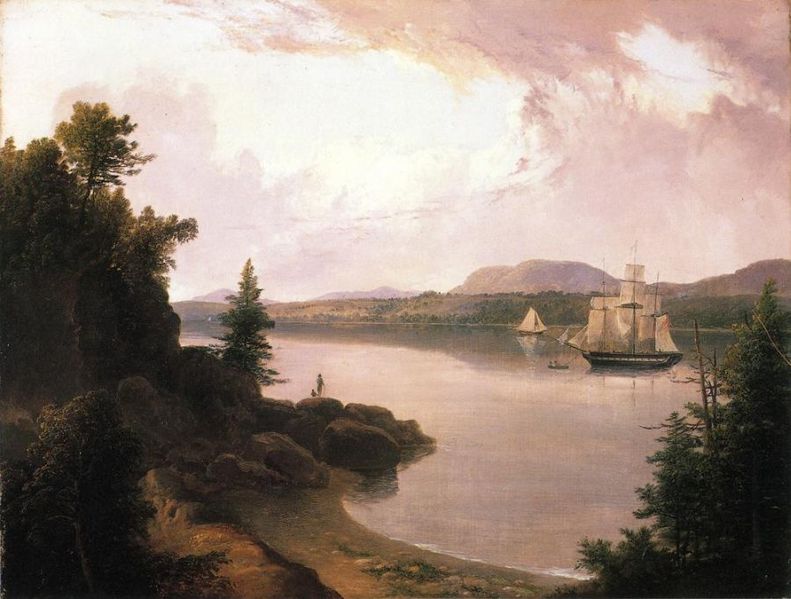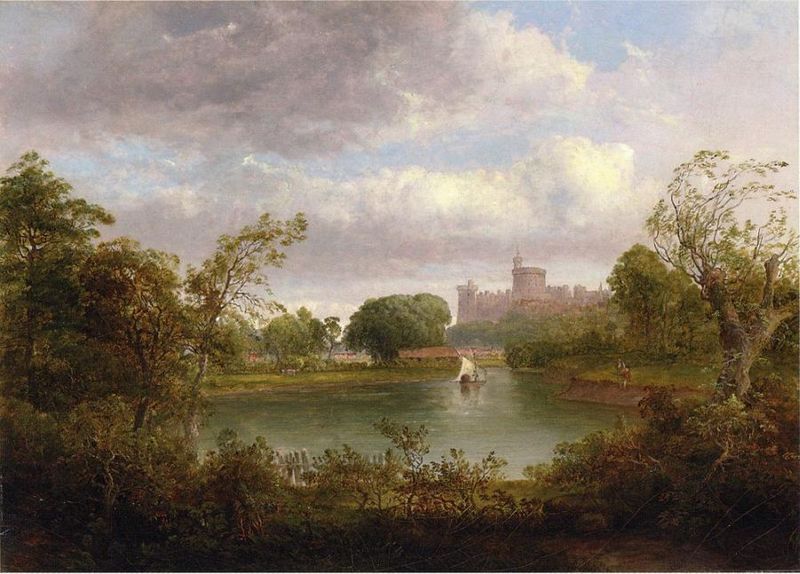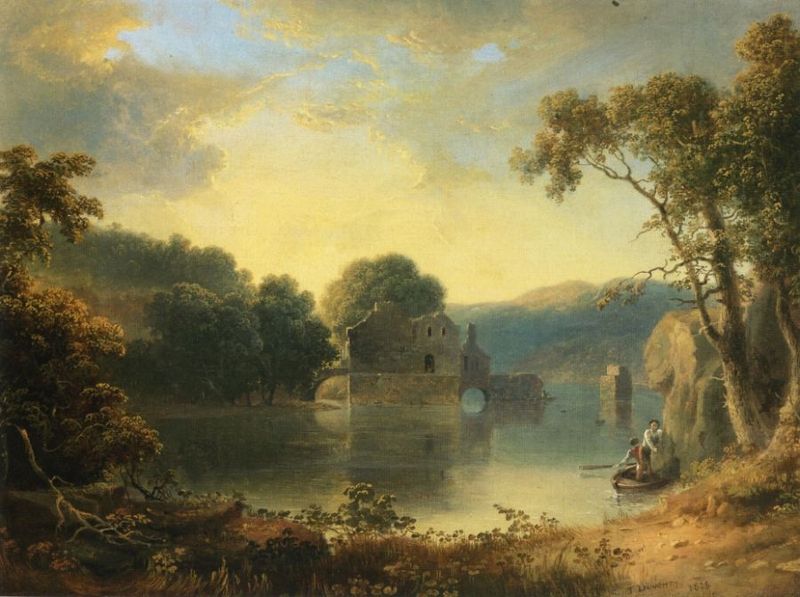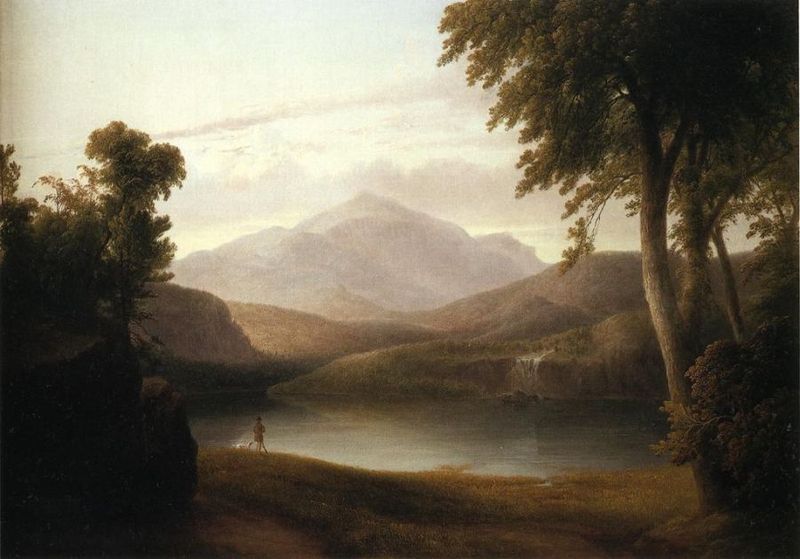<Back to Index>
- Painter Jasper Francis Cropsey, 1823
- Painter Thomas Doughty, 1793
PAGE SPONSOR
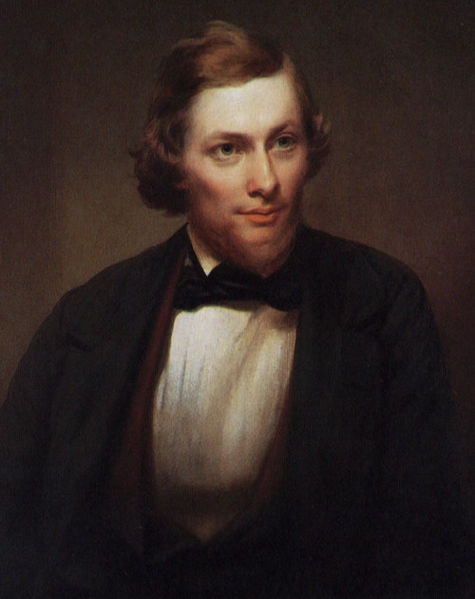
Jasper Francis Cropsey (February 18, 1823 – June 22, 1900) was an important American landscape artist of the Hudson River School.
Cropsey was born on his father Jacob Rezeau Cropsey's farm in Rossville on Staten Island, New York, the oldest of eight children. As a young boy, Cropsey had recurring periods of poor health. While absent from school, Cropsey taught himself to draw. His early drawings included architectural sketches and landscapes drawn on notepads and in the margins of his schoolbooks.
Trained as an architect, he set up his own office in 1843. Cropsey studied watercolor and life drawing at the National Academy of Design under the instruction of Edward Maury and first exhibited there in 1844. A year later he was elected an associate member and turned exclusively to landscape painting; shortly after he was featured in an exhibition entitled "Italian Compositions."
Cropsey married Maria Cooley in May 1847, traveled in Europe from 1847 – 1849, visiting England, France, Switzerland and Italy. He was elected a full member of the Academy in 1851. Cropsey was a personal friend of Henry Tappan, the president of the University of Michigan from 1852 to 1863. At Tappan's invitation, he traveled to Ann Arbor in 1855 and produced two paintings, one of the Detroit Observatory, and a landscape of the campus. He went abroad again in 1855, and resided seven years in London, sending his pictures to the Royal Academy and to the International exhibition of 1862.
Returning home, he opened a studio in New York and specialized in autumnal landscape paintings of the northeastern United States, often idealized and with vivid colors. Cropsey co-founded, with ten fellow artists, the American Society of Painters in Water Colors in 1866. He resided in the City until 1885, when he removed to Hastings - on - Hudson.
Cropsey's home and studio, Ever Rest, in Hastings - on - Hudson, New York, as well as the largest permanent collection of Cropsey's work are open for tours by the Newington - Cropsey Foundation.
Jasper Cropsey died in anonymity but was rediscovered by galleries and collectors in the 1960s. Today, Cropsey's paintings are found in most major American museums, including the National Gallery of Art, the Metropolitan Museum of Art, the Los Angeles County Museum of Art, the Detroit Institute of Arts, the Timken Museum of Art in San Diego, the Honolulu Museum of Art, the Fine Arts Museums of San Francisco, the Denver Art Museum, the Princeton University Art Museum and the Museum of Fine Arts, Boston. Works by Cropsey also hang in the White House.
Cropsey and his wife Maria are buried in Sleepy Hollow Cemetery in Sleepy Hollow, New York.
Cropsey's interest in architecture continued throughout his life and was a strong influence in his painting, most evident in his precise arrangement and outline of forms. But Cropsey was best known for his lavish use of color and, as a first generation member from the Hudson River School, painted autumn landscapes that startled viewers with their boldness and brilliance. As an artist, he believed landscapes were the highest art form and that nature was a direct manifestation of God. He also felt a patriotic affiliation with nature and saw his paintings as depicting the rugged and unspoiled qualities of America.
Some of his works include "Jedburgh Abbey"; "Pontaine Marshes" (1847); "Backwoods of America" (1857); "Richmond Hill" (1862); "Indian Summer" (1866); "Greenwood Lake" (1870); "Lake Nemi in Italy" (1879); "Old Church at Arreton, Isle of Wight" (1880); "Ramapo Valley" (1881); "Autumn on the Hudson" (1882; however, the New York Daily Tribune refers to a painting by Cropsey called "Autumn on the Hudson" in its morning edition of Jan. 7, 1861): "Wawayanda Valley" (1883); "Spring - time in England" (1884); "October in Ramapo Valley" (1885); "Autumn on Lake George" and "A Showery Day" (1886).
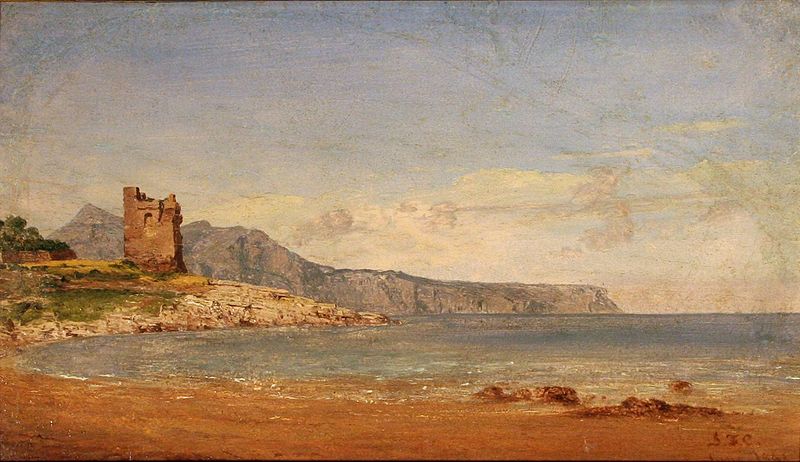
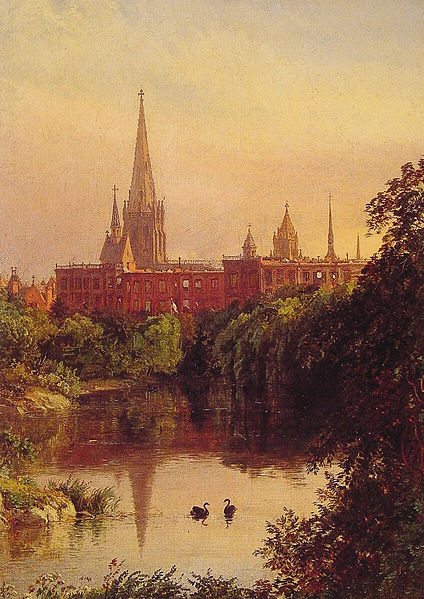
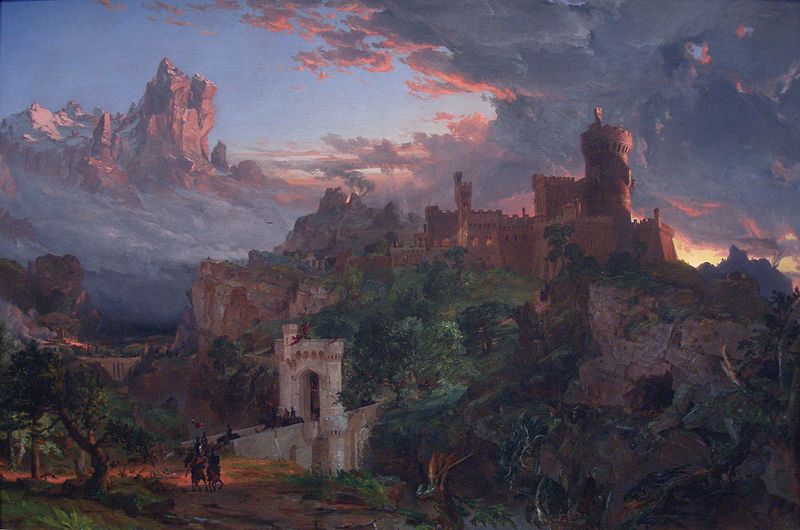
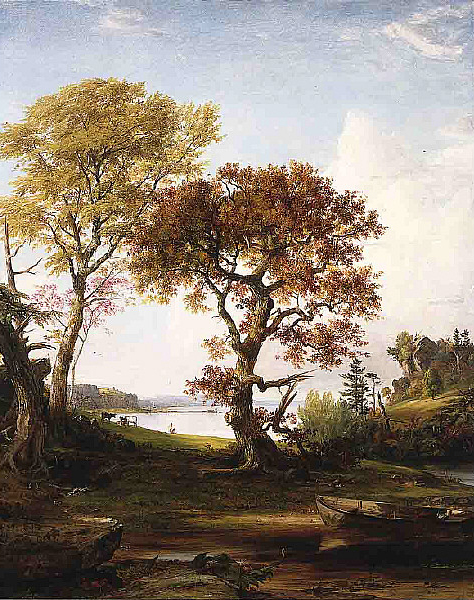
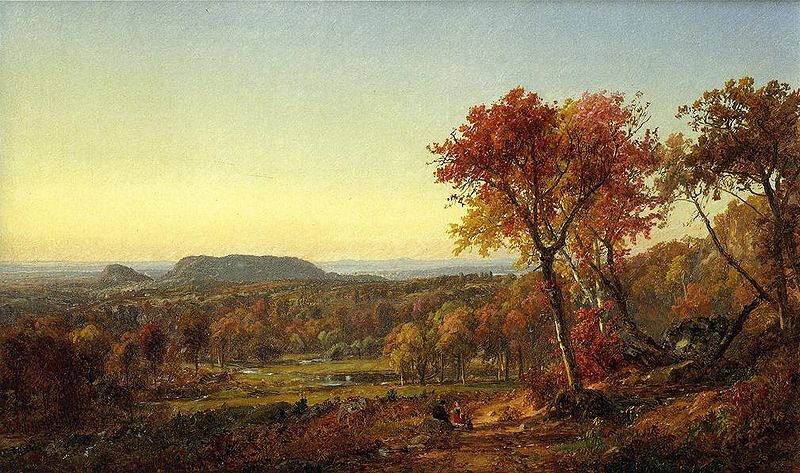
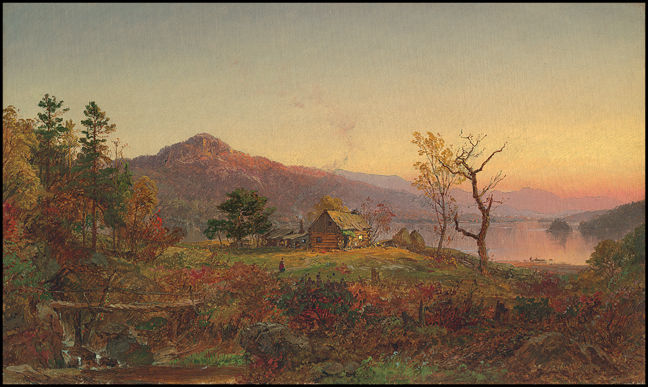
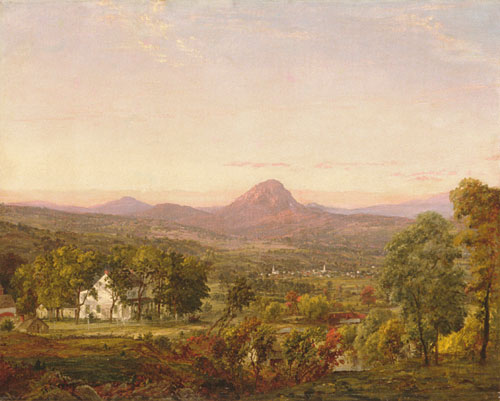
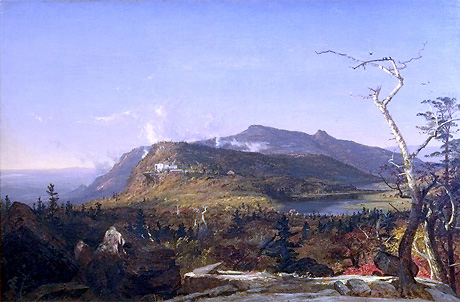
Thomas Doughty (July 19, 1793 – July 22, 1856) was an American artist of the Hudson River School. Born in Philadelphia, Thomas Doughty was the first American artist to work exclusively as a landscapist and was successful both for his skill and the fact that Americans were turning their interest to landscape. He was known for his quiet, often atmospheric landscapes of the rivers and mountains of Pennsylvania, New York, New England, and especially the Hudson River Valley. He taught himself how to paint while apprenticing for a leather manufacturer.
He worked mostly in Philadelphia, but also lived and worked in Boston and New York.
